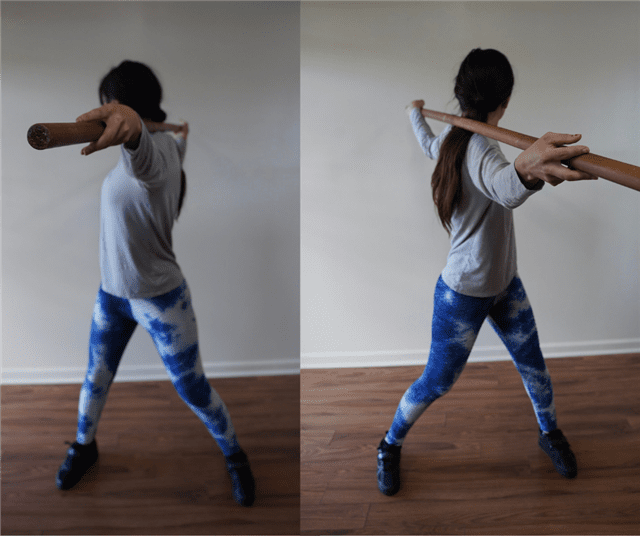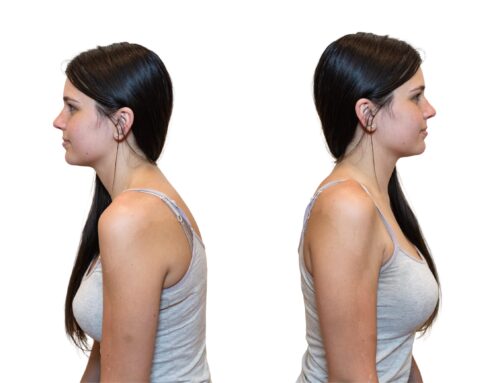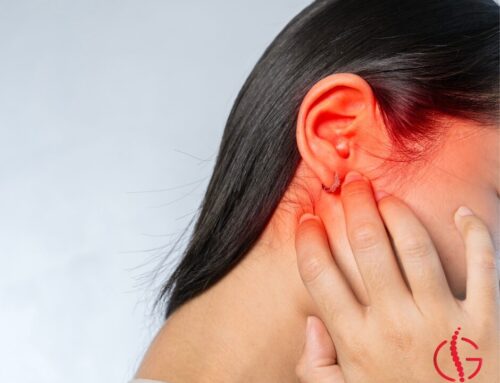Scrolliosis- A Posture that’s Defining a Generation
This resource is designed to educate and empower—so please share it with anyone who might benefit. Scrolling on your phone. Scrolling on your tablet. Sitting at the computer, scrolling through webpages. Scroll, scroll, scroll—what we like to call Scrolliosis (not an official diagnosis… yet).
It shows up under many names: upper-crossed syndrome, anterior cervical weight-bearing, tech neck, or even hump neck. Most people recognize it when they see it in others—but do you recognize it in yourself?
And scrolling isn’t the only culprit. Feeding a baby, working at a desk, even looking down in the kitchen can all contribute to the same forward-head posture. According to the Cleveland Clinic, tech neck can lead to chronic neck pain, stiffness, and even nerve compression if left untreated.
Why are so Many People in Pain?
It comes as no surprise that headache, neck pain, upper back pain and shoulder pain run rampant. I treat it all day as do many other providers. Regular anti-inflammatory use is not the preferred solution. Sticking a piece of tape over your check engine light is a poor strategy. The disturbed posture syndrome of rounded shoulders and upper back, head listing forward with attendant pain in the form of headache, neck pain, upper back pain, shoulder pain or more than one of the above is manageable. Its management requires deliberateness. Human biomechanics are complicated and is easy to find yourself not knowing where to start. We are here to help.
Understanding Upper Cross Syndrome
So, What Do We Do?
Successful management requires a multipronged attack. The depiction of this postural disorder that is afforded us by the modeling of upper crossed syndrome provides us with some important insight. With this, we can see the problem of the head having drifted forward as well as having rocked backward in extension, the upper thoracic spine having curved forward, the shoulder blades having drifted forward would immediately leave us expecting that if we could simply reverse these distortions we would have arrived at a solution. To an extent this is true. I have spent many years adjusting this problem and many like it and I can tell you that there are some important considerations standing between getting adjusted and staying adjusted, and many of these considerations present themselves in the management of upper crossed syndrome.
Muscles, Joints, and the Real Work Behind Correction
The matter that presents itself first is that of the joints and the muscles. Any hope of correcting alignment demands that joint motion must be present. Joint motion demands that muscles must be pliable, healthy and allow for motion. The two really go together; it’s fair to say that neither really exists without the other.
Why Crossed?
The reason the syndrome is described as being “crossed” is that it can be described as an alternating arrangement of particularly tight, short muscles and particularly long, weak and de-facilitated muscles. The weak muscles need to get stronger, and the short muscles need to get longer. It sounds simple. It’s not. Again it requires deliberateness.

Getting Help and Moving Forward
If we can get it moving and you can keep it moving, we usually look back at the care process and discover that we have been successful. This implies that you’re going to need a certain amount of help. Expecting that you have gotten that help, either from us or from some other physical care provider, let’s move forward into the three elements of self-care.
1. The Cervical Spine
It’s a good idea here to begin with the top and that has us looking at the head as it sits upon your neck and your shoulders. The chin tuck as a movement rotates the head, flexing it forward and contracting the deep cervical flexors and stretching the upper cervical and occipital extensors. If that was all it did, it would be valuable, but it gets better than that. This movement cues or orients the shoulders and upper back to collect themselves up under the head and becomes the genesis of neurologically reorganizing yourself so that your effort at correcting your posture starts to impress itself in your cerebellum. Doing this movement seated is good but also doing it supine as a resisted movement is even better. The accompanying images and videos help paint the picture.


In an effort to normalize your cervical spine as it sits upon your thoracic spine as well as cue your thoracic spine to “straighten up” under your cervical spine; push your chin towards your neck. You can use your fingers to help push back or simply use your neck muscles. The head should travel back over the shoulders and upper back and the skull itself should flex/rotate to stretch the deep occipital extensors.
2. The Thoracic Spine
The upper thoracic spine seems to be one of the most difficult places in the body to master motion. Some coaching here might be necessary. The two instruments that can be most readily relied upon for this process are movements with the twist stick as well as the cross-bench pullover. Tutorials are found below.


To do twist stick correctly, make sure to be loose at the hips in order to get a full range of motion. This is best done in front of a mirror. Your shoulders should move more than the hips. The hips should not be rigid.
For more information on the cross bench pullover, head over to our blog Upper Cross Syndrome/Cross Bench Pullover for a fuller discussion.
3. The Shoulders
Efforts at remediation of the shoulders should begin by focusing upon the shoulder blades. For some attention to the shoulder joints themselves (the glenohumeral joints) may be necessary. The first two objects of your attention in re-organizing the bearing of your shoulder blades should be the pectoralis minor and the scapular retractor muscles (middle/lower traps and rhomboid). The pectoralis minor muscles will need to be stretched and may perhaps need manual attention. The scapular retractors will need to be stronger, and they will need to be trained to remain engaged. My favorite play here is to train a rowing movement with the addition of pre-exhaust technique. Simply put, when doing a compound movement like a rowing movement which is accomplished with many muscles such as the biceps, the deltoids,latissimus dorsi as well as the scapular retractors, effectively focusing the movement is improved by “pre-exhausting” or pre-fatiguing the target muscle. Here, this is achieved by preceding a set of rows with a set of scapular retractions or horizontal shrugs – this will probably also require a little bit of coaching. Don’t worry, you can do it.

Making it Work for You
This has been my best effort to take what is actually very complicated and often otherwise unmanageable and break it down into its elements. It still isn’t simple, I know that. We have made this work for people, and it can work for you. I hope you found something in this that has been helpful for you, it’s an honor and a pleasure to be of service to the community here in Grovetown, Augusta and the CSRA.
Bang, Andrew, DC. “Text Neck: Is Your Smartphone To Blame?” Cleveland Clinic Health Essentials, 19 Dec. 2023, health.clevelandclinic.org/text-neck-is-smartphone-use-causing-your-neck-pain.
Written by: Donaid Seals D.C
Dr. Seals is a practicing Doctor of Chiropractic with over 25 years of experience caring for people. His thinking is the product of his education, practice experience and many years in the natural foods and fitness industry. He has become living proof that old muscleheads don’t die-or fade away; sometimes they grow up to bring real-world expertise to the clinical picture. Traditional background information is available here.
Disclaimer: Consult with a healthcare provider before starting any new supplement/workout regimen, especially if you have underlying health conditions or take medications. The entire contents of this website are based upon the opinions of Dr. Seals, unless otherwise noted. Individual articles are based upon the opinions of the respective author, who retains copyright as marked. The information on this website is not intended to replace a one-on-one relationship with a qualified health care professional and is not intended as medical advice. It is intended as a sharing of knowledge and information from the research and experience of Dr. Seals and his community. Dr. Seals encourages you to make your own health care decisions based upon your research and in partnership with a qualified health care professional.


